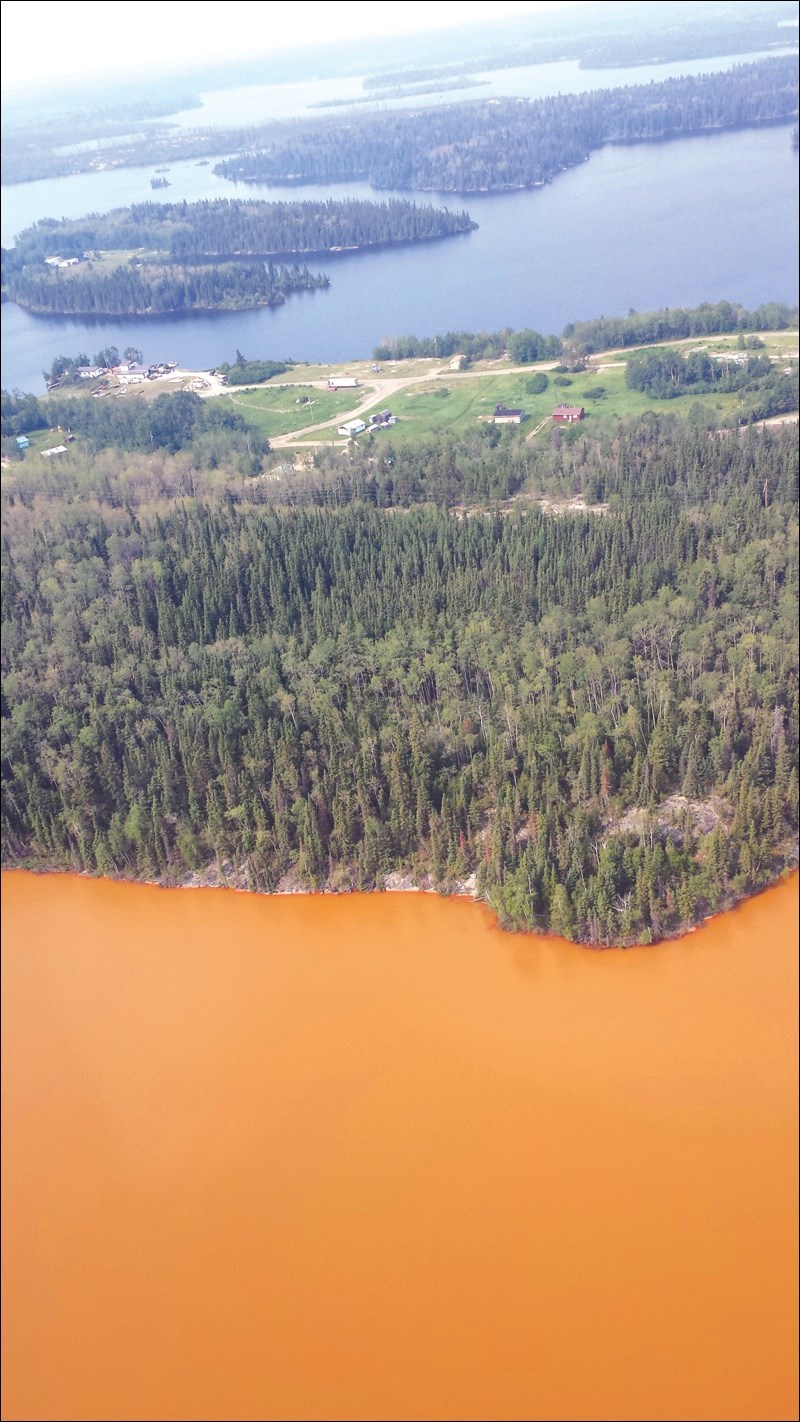Residents of Sherridon were upset to learn that mine tailings were to be disposed into neighbouring Kississing Lake beginning at 4 pm on Wednesday.
Debi Hatch, a nurse in
the area, contacted The Reminder explaining that the tailings were to be drained from Camp Lake into Kississing Lake despite protests by residents and elected officials in the community.
As The Reminder reported on April 28, the province launched a project in 2009 to remediate decades-old mine waste in Sherridon, a town of about 85 people situated 60 km northeast of Flin Flon.
The project involved relocating the waste, known as tailings, into Camp Lake and submerging it in water. The last of the tailings were moved in 2013. The project included the construction of a water treatment plant and an accompanying access road across Camp Lake. The plant was ineffective in treating the water in Camp Lake. Further research was conducted and it was discovered that the access road itself, built with tailings, was producing acid.
Hatch said the contaminated water contains “zinc levels that are sky high and too much copper and lead.”
According to Hatch, government engineers are now claiming that they need to pump water from Camp Lake into Kississing Lake because they fear high water levels will breech the weir between the two lakes.
This claim doesn’t seem correct to Hatch, who said, “They weren’t worried about it in the spring when the water level was higher.”
Hatch is among residents concerned that the contaminated water that looks orange in aerial photos will be released into Kississing Lake, a popular recreational area.
“The release area is one kilometre away from where our kids swim,” she said. “Kississing Lake is a high quality fishing lake and the main source of income for the community. The lodges and outfitters on the lake provide employment to local residents. As well, the lake is used by commercial fishermen, trappers and wild rice growers. The lake is also used for recreational activities throughout the summer months.”
As The Reminder reported in April, 1,500 tonnes of lime were spread on the frozen surface of Camp Lake in an effort to neutralize the pH level when the ice melts.
Hatch said that the fine lime dust ended up blowing throughout the town, leading to several local children becoming ill and forcing the temporary closure of the community school. When the same situation occurred a second time, an investigator was brought into the community and tests on the playground equipment came back positive for lime. According to Hatch, the investigator also became ill and was hospitalized while in the community performing the tests.
Before the remediation project began in 2009, 17 million cubic metres of acidic water drained into Kississing Lake each year, Dr. Chris Beaumont-Smith, director of mines for the provincial government, told The Reminder in April. “Now it’s zero,” he said.
However, according to Hatch, the overflow was not positive.
“When the water with the mine tailings was leaking into Kississing Lake we didn’t have any fishing for years,” she said. Today, fish are plentiful in what she describes as the “pristine Kississing Lake.”
Hatch said that she and her fellow residents have been fighting the government on the issue for a number of years and that a strong lack of trust has developed. Officials have told the community that the pH levels are in line with required standards but Hatch explained that is only partially true.
“It meets the Metal Mining Effluent Regulations but not the Canadian Guidelines for Protection of Aquatic Life,” she said.
At press time neither Sherridon Mayor Nick Benyk nor Dr. Chris Beaumont-Smith could be reached for comment.




